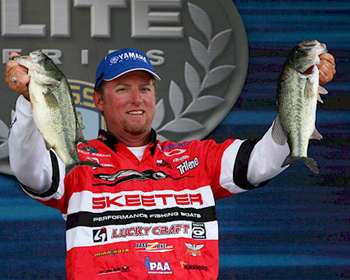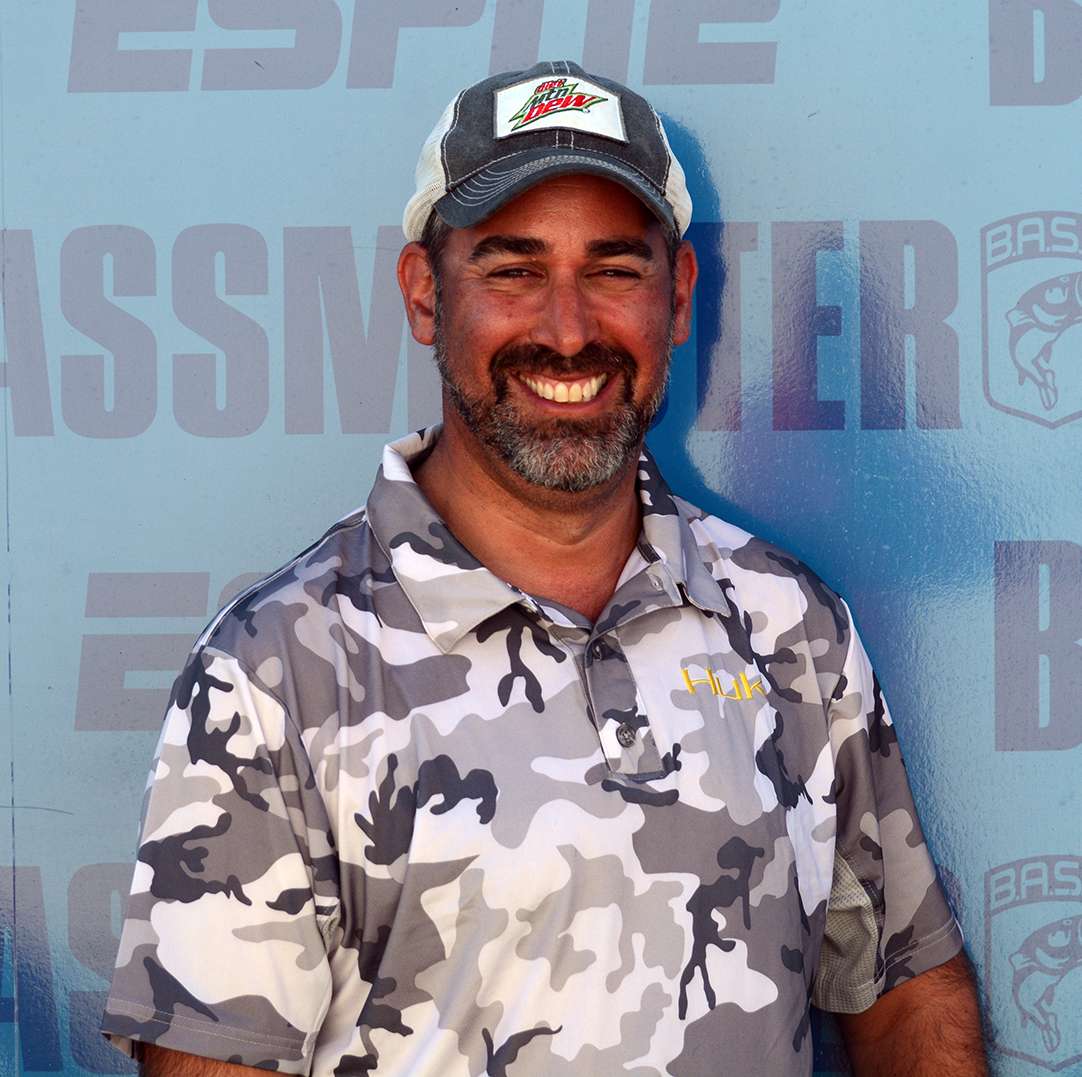
Texas pro Kelly Jordon has more crankbaits in his boat than most tackle stores have hanging from their pegboards. There are shallow divers, deep divers and lures that'll get down to every depth in between. There are wide wobblers and tight wigglers. Some get through cover effortlessly, while others tend to hang up a little more easily.
But take a look in his boxes of deep divers and you'll see that the color variations are fairly limited.
"In deep divers, there are really two basic colors," he says. "One is a white or shad pattern, and the other is some sort of chartreuse pattern."
Fortunately, no one has asked the loquacious and talented angler to pare down his monumental collection of bottom-hugging deep divers, but if forced to do so he wouldn't hesitate in the least before naming his two "must-haves."
"If I could only have two deep diving crankbaits, one of them would be a Pearl Ayu color Lucky Craft D20," he answered. "That's basically white with a little chartreuse and a darker greenish back. That's my personal favorite. And then I'd have a chartreuse with a blue back. If you've got those two colors, you're in business."
Of course, no one has limited him to two baits or two color patterns, so he carries a variety with him. Even in the latter of those two basic shades, he may have chartreuse that's bright or faded with a blue, green or black back. And he adds that on certain lakes, the forage may dictate what you throw.
"There are times when there are subtle variations that work better," he explains. "Like on Lake Fork, where the largemouth bass eat yellow bass, a crankbait that matches the color of a yellow bass is really good. Those big bass also eat shad but they love the yellow bass."
Time of day, weather conditions and water clarity also play a role.
"Chartreuse patterns work better early and late in the day and also when the water is a little off-color," he says. "On Lake Fork, you can barely catch one on a chartreuse crankbait during the day, but early and late, they'll crush a chartreuse crankbait because it's more visible to the bass. Once the sun gets up, a white one will outcatch a chartreuse 10 to 1."
If allowed to add a third basic color group, Jordon picks something in the crawfish family — some combination of red, brown, black and/or green, depending on the prevalent local forage.
"Your other important patterns include something in chrome," he adds. "My favorite chrome patterns are Lucky Craft's Aurora Black or American Shad. At times, the chrome triggers more strikes."
Jordon emphasizes that while subtle variations may at times put a few extra fish in the livewell, the best way to ensure maximum effectiveness is to keep a crankbait in the proper strike zone.
So long as it is within the proper family of colors, in many cases it's the action and cadence of a bait, rather than a precise color scheme, that makes the most difference. If an angler can learn which crankbaits will bump the cover at a certain retrieve speed, they're more likely to increase their catches than if they spend an equal amount of time matching the hatch; but given the choice, Jordon gives his best effort to achieve both of these goals.





